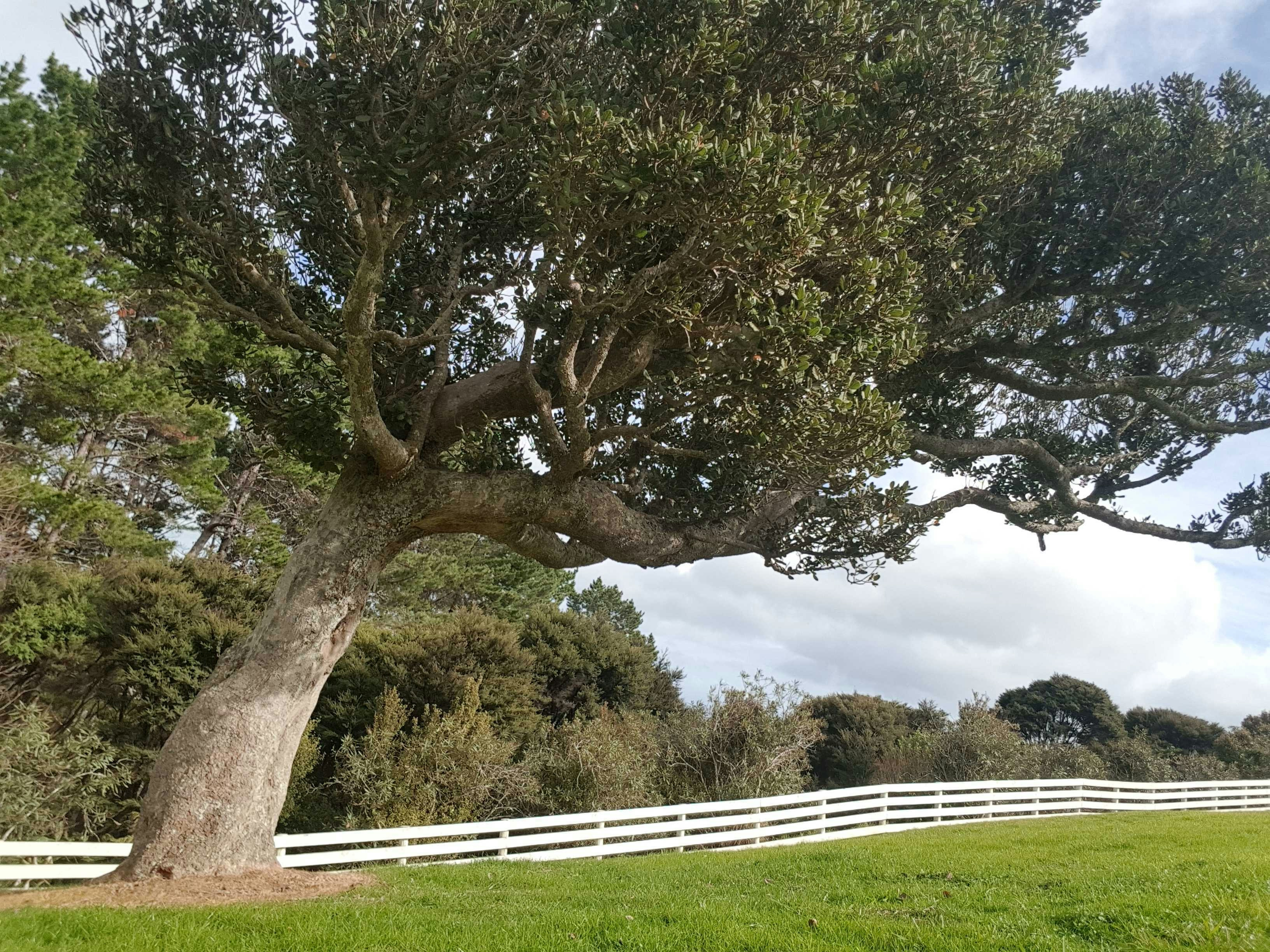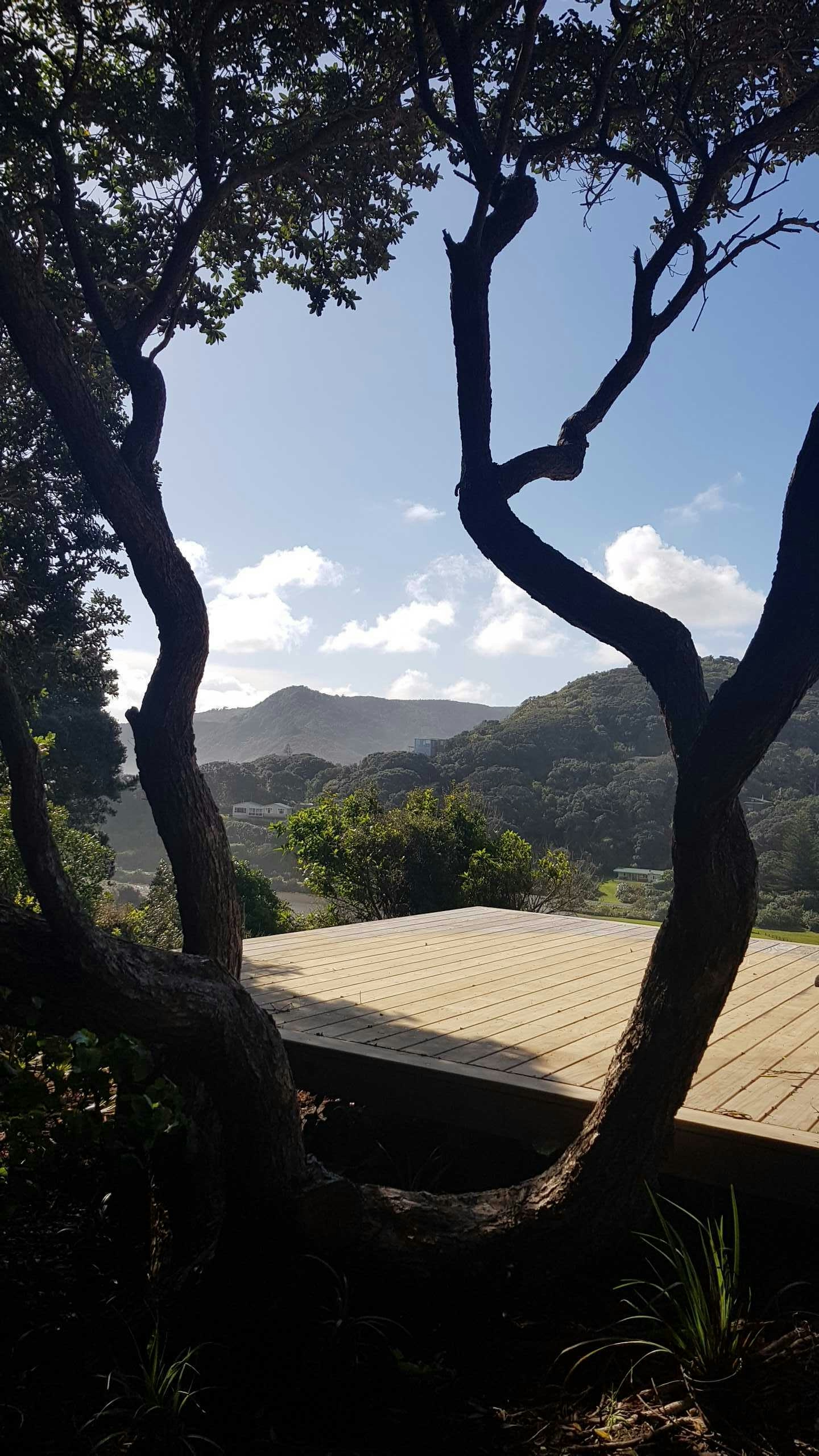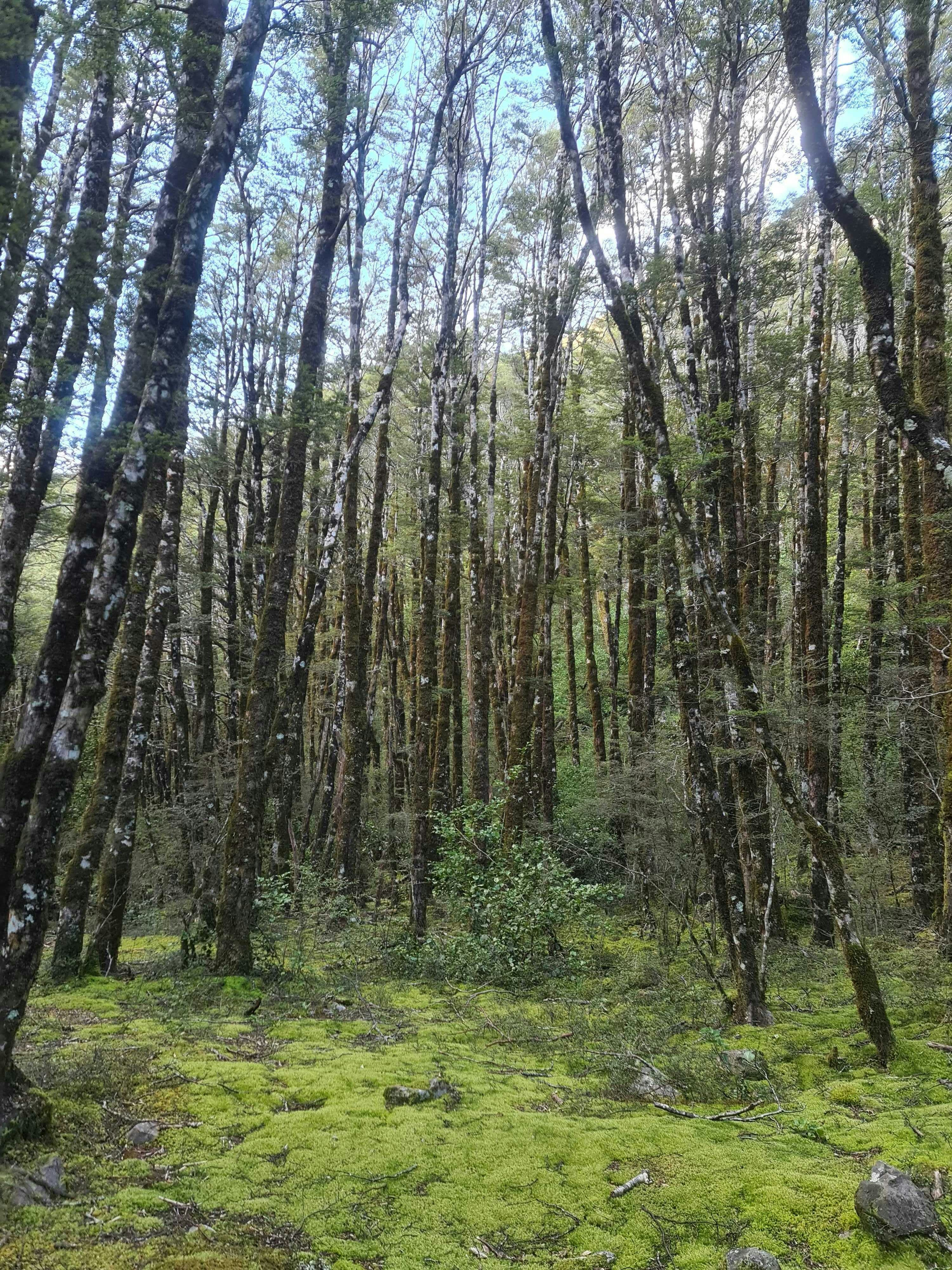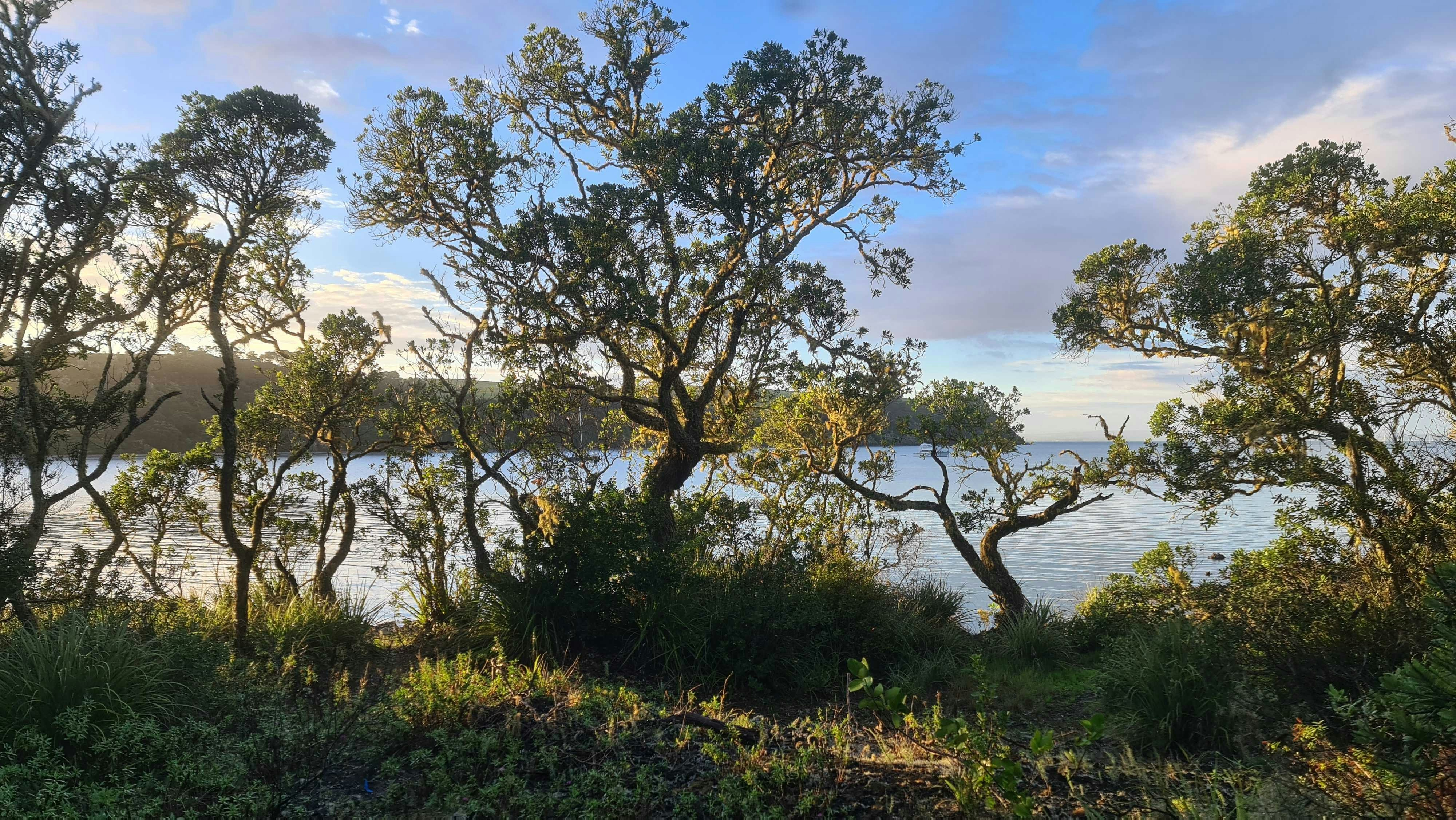Every morning when my husband and I wake, the first thing we do is open our curtains to the canopy of trees that fill the small wedge of land connecting our garden to the maunga behind. In the middle of winter, the tuis swarm between feasting on the berries of the houpara (Pseudopanax) and the branches of the magnolia, flirting and fighting and expressing it all in a cacophony of competitive song. It is my favorite time of day, and the mood of the trees is in constant flux with the seasons and the weather. When I wake in the night to the sound of rain, I know in the morning I will be entertained by the water dumps of the fully weighted puka leaves, leaving the performance of Cuba Street's famous bucket water feature for pale as the leaves cast off the unwanted weight of the rain in a ceremonious bassline of giant sploshes.
There are certain sunrises which transform the verdant greens into oranges and some to pinks, just for an hour of the day. The birdsong is orchestrated at a volume that assures us we are not alone in noticing this miracle, ensuring we don't doze long enough to miss its fullness. The misty mornings in winter when the forest of trees disappears into a sky thick with fine hanging water. The heaving hot summer days when they pull the clean breeze down to cool the earth beneath.

Most people I meet have a love for trees, each intimate and personal, tied to memories of childhood, family, and place. The truth is, before most people decide to remove a tree, they normally start by expressing their love for trees and then explain their need to remove the particular tree in front of them.
The reasons are almost always valid and carry common themes: the inappropriateness of the tree's position, the blocking of views or sunlight, the constant mess of leaves and dropping of seeds, poor fruiting, general unattractiveness, safety concerns and poor health, the need for housing or vehicle access. Roots wander into water pipes or sewerage looking for sustenance, or lift carefully paved paths and concreted driveways. In each situation, the reasoning is sound, and in a city such as Auckland where housing is in real demand, room must be made. The issue is that through the recent decade, over 60% of our tree canopy has been removed from the urban environment, and this is not relative to a 60% increase in housing. Trees are also replaced reluctantly, as perceptions of them as potential future troublemakers see them pushed further from the perimeter of our cities.
When we pull back and see the big picture, most people value trees greatly—when viewed at a distance. It is when trees encroach on our personal borders that the perspective shifts, and the reality is that quietly, one by one, they fall. The neighbours at a distance cry foul while those closer secretly sigh with relief for the light and sky which is returned.

I have spent many years listening to and digesting the many perspectives I have encountered in my regular visits through urban and suburban backyards, and I've sought to find a way of shifting the balance. I've watched the pendulum swing from strong protections to barely none, and I've tried to think through ways we can sustain a less reactive approach to integrating trees permanently into our cityscape. One solution lies in the early and continued management of the trees in our gardens—one that will only be achieved by creating a healthy culture of tree management. In the most beautiful cities in the world, trees are valued as integral to their livability factor and should be viewed as integrated elements of the design of our city spaces.

The management of their form needs to become a tradition for trees to endure for generations. The advantage we have with trees is they are malleable and responsive to both the environment and our pruning and manipulation. While some may cry "torture," trees themselves are used to bending to the prevailing winds or twisting towards the light. They are also resilient to having limbs lost as an essential response to storms and floods. With care and thoughtfulness, especially when managed from a young age, trees can be guided into a desired form, and rather than blocking views or wanted sun, they can be nurtured to frame and add needed shelter.


Many cultures have long-standing traditions of tree manipulation. The Asian art of bonsai is an example of the extreme to which we can reform even naturally immense trees into any form a place may require. We can look to the natural growth patterns of trees in a dense forest environment to see that trees are comfortable growing in the narrowest of situations. The tawhai (beech) forests in Te Wai Pounamu (South Island) are representative of this, where saplings grow upwards together from the mossy earth of the forest floor until they can reach the light at the fringe of the canopy and stretch out. This natural growth pattern can be utilised to green the space between buildings as the canopies of our cities also begin to climb.
Join Our Newsletter
XANTHE WHITE DESIGN
Auckland Studio
Phone: 09 815 1187
Email: info@xwd.co.nz
XANTHE WHITE DESIGN
Wellington Studio
Email: wellington@xwd.co.nz
